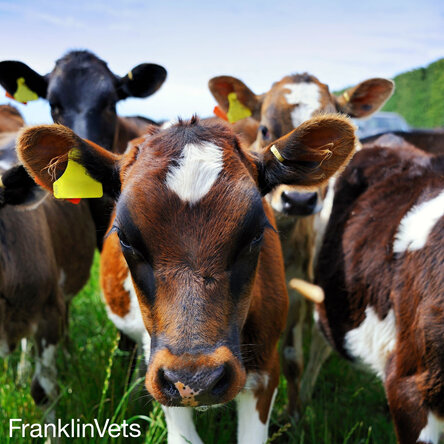Franklin Vets
Franklin Vets - excellence in veterinary care for dairy, farming, lifestyle, equine and household pets. BESTPRACTICE ACCREDITED NZ.
Your account is powered by Storbie. To edit your profile visit my.storbie.com
Your account is powered by Storbie. To edit your profile visit my.storbie.com

When I sit down with farmers to form a parasite management plan I like to talk about three legs of a stool. If any of these legs fail, the stool will fall over, and you will fall on your bum!
By growing strong healthy calves, we help the calf to form an immune system that will fight the parasite burden naturally. It sounds obvious to grow good calves, but in my travels around the district, many mobs of calves are still well underweight. Preventative measures against other diseases such as BVD, Yersinia and Coccidia, which lower the calves' immune system function and compromise their ability to fight parasites are also important. There are also immune function promotors such as Multimin and the Ruminate product called Forage Balancer Weaner to assist in growing bigger weaners.
95% of all parasites on your farm are in the form of larvae on pastures. Calves excrete worm eggs in their faeces and the larvae hatch on the grass waiting to be grazed by the next batch of calves through the paddock. For this reason, grazing the same paddocks multiple times in a row with R1s is very risky as this quickly leads to high levels of parasite larvae on the pasture. The knock-on effect is high parasite burdens in your youngstock resulting in disease, poor growth rates and reduced immune function (see leg 1). Ideally, a paddock should be grazed with adult cattle (or at least R2s) after each grazing by R1s. This allows the adult cattle to ‘vacuum up’ the parasite larvae left behind by the R1s. Runoffs where R1s go around the same paddocks continuously are also at high risk for developing very contaminated pastures, which compromises calf performance and accelerates parasite resistance development due to the high use of drenches on these properties.
It is safe to assume that we are not going to fix drench resistance by using more drench, and therefore our focus must be on using an effective drench only when the animal needs drenching. It is important to note that R1s should only receive combination drenches, single active drenches are not appropriate for R1 calves. We have a client that has moved to undertaking faecal egg counts every 2 weeks on their calves. If counts are high, those calves are drenched; if counts are low, no drench is given. This strategy has halved the drench use on these calves over the last 12 months. This protocol requires some time to collect the samples and money to pay for the testing but has saved much more time and money by halving the drench used. We encourage all farmers to conduct a drench check once a season. A drench check involves collecting a set number of faecal samples before drenching to test worm numbers pre-drench and then again 10 days post-drench. There should be zero eggs present at this second test. If eggs are still present, then this indicates that either something has gone wrong with your drenching or that resistance is present. This is the time to get further advice on your next steps.
Dr Brent Neal, BVSc MANZCVS Veterinary Pharmacology, Farm Vet, Pukekohe
Franklin Vets - excellence in veterinary care for dairy, farming, lifestyle, equine and household pets. BESTPRACTICE ACCREDITED NZ.



